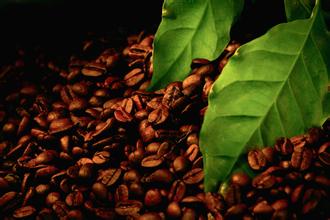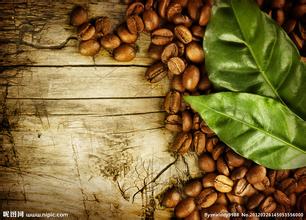Introduction to the Manor of Panamanian Rosa Coffee by the method of treatment
Panamanian Rosa Coffee
Because the tree species are taller than ordinary coffee trees, Geisha was originally planted in a small area of the estate and was used as a windbreak. In order to take part in the annual competition for the best coffee in Panama, the son of the manor owner searched all the coffee trees in the manor for testing, which gave Geisha a chance to appear on the stage. After that, he also participated in various world coffee competitions and won a total of 11 championships. His son, Mr. Bra Espidazon, moved to Panama from California in 1973 and inherited his father's farm. In 1987, most of the farms were changed to grow coffee. In 1994, he invested in the machinery and equipment of refined coffee to create a brand. While Mr. Bidarson and his wife Susan started a formal business on the coffee farm, they also raised three children, Elligo (born in Philadelphia in 1966), Rachel (born in Sweden in 1967) and Danielu (born in Panama in 1974).
In 1996, Blaise and Rachel visited a farm for sale in the Haramijun area of the Bocketi Valley, and was attracted by the beautiful farm and immediately bought it. This is Esmeralda. Daniel Lou, the third son of Haramiqiong Farm. It is in this farm that Mr. Bidasson has grown Geisha coffee that attracts the attention of the coffee world. The species of Geisha was discovered in the Rose Summer Forest of Ethiopia in 1931 and sent to the Coffee Institute in Kenya; it was introduced to Uganda and Tanzania in 1936, in Costa Rica in 1953, and Panama was introduced in the 1970s by Francesca of Dongba Seven Farm Garden. Mr. Serraxin got seeds from CATIE, Costa Rica, and started growing Rosa Coffee.
Geisha, sweeping the coffee industry with the power of a hurricane, the coffee revolution is so fierce that a king who has occupied the throne of the coffee kingdom for a long time, the Blue Mountains of Jamaica and Kona of Hawaii, this wild species originally from Ethiopia, has now spread throughout the major coffee producing areas after numerous battles, and its best spokesman is the "La Esmeralda" manor from Panama.
There are three ways of plantation: sunshine plantation, full shade plantation and semi-shade plantation. Plantations with more than 50 plants per hectare are fully shaded plantations, 25-50 plants are semi-shaded plantations, and less than 25 plants are called sunshine plantations. What is the effect of shading and shading on coffee in the plantations of the two neighbors with the same planting conditions? Shading plantations can slow down the ripening time of coffee fruits, so there are more flavor substances in coffee cherries, so shading itself increases the cost and reduces production, and its coffee flavor is higher than that of semi-shaded plantations under the same planting conditions. now most plantations in Colombia are associated with coffee trees and bananas because Arabica trees are becoming more and more dwarfed. So when the banana tree rises, it acts as a shade.

Important Notice :
前街咖啡 FrontStreet Coffee has moved to new addredd:
FrontStreet Coffee Address: 315,Donghua East Road,GuangZhou
Tel:020 38364473
- Prev

Description of ARICHA Taste and Flavor of Yejiaxuefei Coffee Bean introduction to the treatment method of manor production area
ARICHA description of taste and flavor of Yejiaxuefei coffee beans the best way to drink coffee beans with unique taste is cold extract. The coffee powder is put into cold water, soaked statically for 12-20 hours, and then filtered into coffee liquid by filter paper. under the condition of low temperature and long contact with coffee powder, only small molecular flavor substances, such as flower and fruit flavor, are extracted.
- Next

Introduction to the grinding scale of the flavor description method for the aroma-rich Arabian coffee bean manor.
The aroma-rich Arabian coffee bean manor area flavor description processing method grinding scale introduction from the collection of coffee beans to processing into finished products, coffee has been kept free from soil and other sundries to ensure taste and quality; second, graded collection: since coffee beans are not uniform and mature, coffee beans of the same level are collected centrally rather than mixed together
Related
- Detailed explanation of Jadeite planting Land in Panamanian Jadeite Manor introduction to the grading system of Jadeite competitive bidding, Red bid, Green bid and Rose Summer
- Story of Coffee planting in Brenka region of Costa Rica Stonehenge Manor anaerobic heavy honey treatment of flavor mouth
- What's on the barrel of Blue Mountain Coffee beans?
- Can American coffee also pull flowers? How to use hot American style to pull out a good-looking pattern?
- Can you make a cold extract with coffee beans? What is the right proportion for cold-extracted coffee formula?
- Indonesian PWN Gold Mandrine Coffee Origin Features Flavor How to Chong? Mandolin coffee is American.
- A brief introduction to the flavor characteristics of Brazilian yellow bourbon coffee beans
- What is the effect of different water quality on the flavor of cold-extracted coffee? What kind of water is best for brewing coffee?
- Why do you think of Rose Summer whenever you mention Panamanian coffee?
- Introduction to the characteristics of authentic blue mountain coffee bean producing areas? What is the CIB Coffee Authority in Jamaica?

